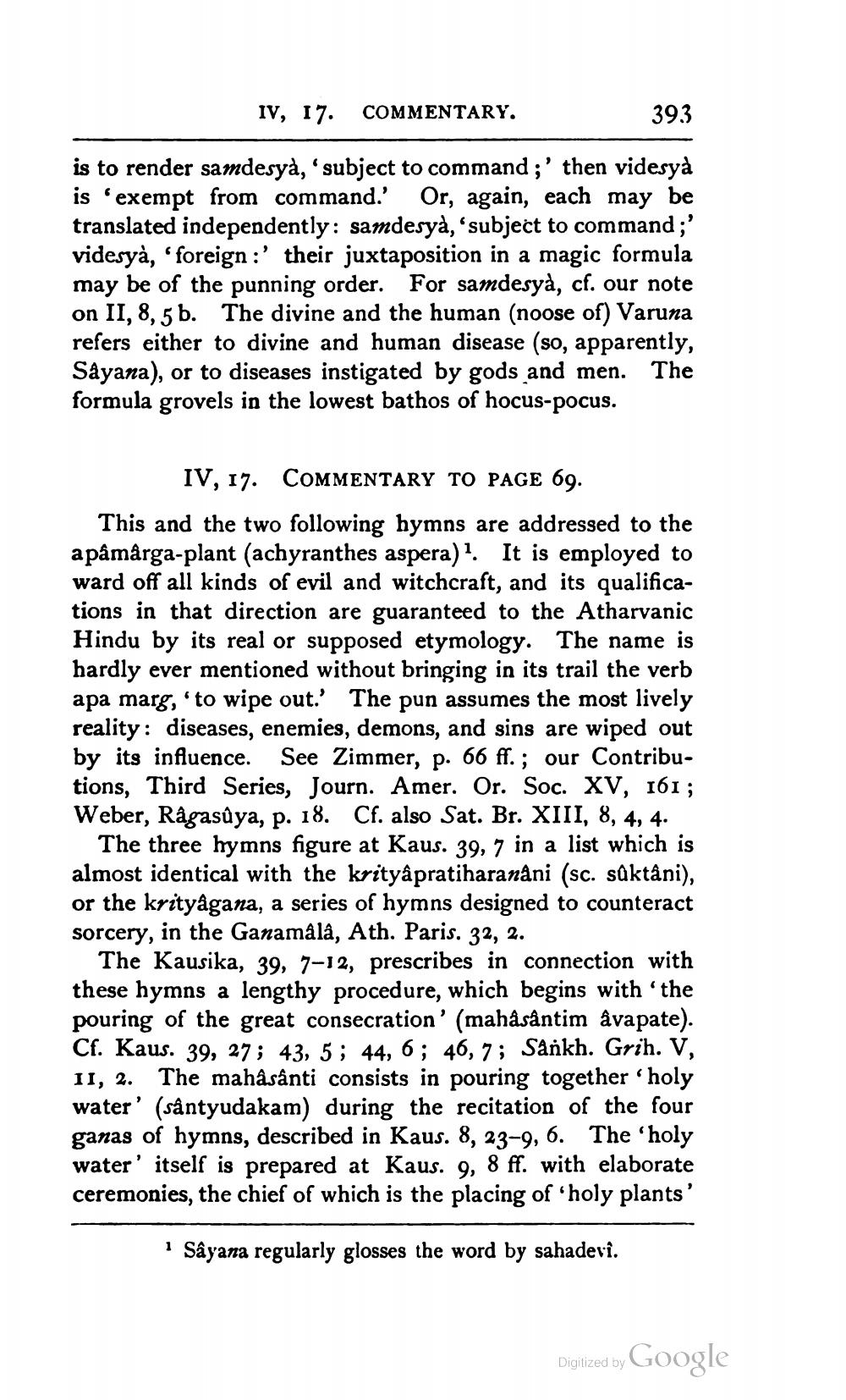________________
IV, 17. COMMENTARY.
393
is to render samdesyà, 'subject to command ;' then videsya is 'exempt from command.' Or, again, each may be translated independently: samdesyà, subject to command;' videsyà, 'foreign :' their juxtaposition in a magic formula may be of the punning order. For samdesya, cf. our note on II, 8, 5 b. The divine and the human (noose of) Varuna refers either to divine and human disease (so, apparently, Sayana), or to diseases instigated by gods and men. The formula grovels in the lowest bathos of hocus-pocus.
IV, 17. COMMENTARY TO PAGE 69.
This and the two following hymns are addressed to the apâmârga-plant (achyranthes aspera). It is employed to ward off all kinds of evil and witchcraft, and its qualifications in that direction are guaranteed to the Atharvanic Hindu by its real or supposed etymology. The name is hardly ever mentioned without bringing in its trail the verb apa marg, 'to wipe out.' The pun assumes the most lively reality: diseases, enemies, demons, and sins are wiped out by its influence. See Zimmer, p. 66 ff.; our Contributions, Third Series, Journ. Amer. Or. Soc. XV, 161; Weber, Rågasûya, p. 18. Cf. also Sat. Br. XIII, 8, 4, 4.
The three hymns figure at Kaus. 39, 7 in a list which is almost identical with the krityâpratiharanani (sc. sûktâni), or the krityågana, a series of hymns designed to counteract sorcery, in the Ganamâlâ, Ath. Paris. 32, 2.
The Kausika, 39, 7-12, prescribes in connection with these hymns a lengthy procedure, which begins with the pouring of the great consecration' (mahåsåntim âvapate). Cf. Kaus. 39, 27; 43, 5; 44, 6; 46, 7; Sankh. Grih. V, 11, 2. The mahâsanti consists in pouring together 'holy water' (sântyudakam) during the recitation of the four ganas of hymns, described in Kaus. 8, 23-9, 6. The 'holy water' itself is prepared at Kaus. 9, 8 ff. with elaborate ceremonies, the chief of which is the placing of holy plants'
· Sâyana regularly glosses the word by sahadevi.
Digitized by
Digitized by Google




